All Seeing Eye: Can Russia Break Through The West's ISR Overmatch?
We explore how Russia can deal with NATO/Five Eyes' vast space-recon capabilitiess during the coming offensives.
“Any war at the turning point of technological epochs ( and we are just in a state of such transition) is burdened by a lack of understanding of the principles of operation of new weapons and tactics of their use, as well as the overall strategy of the entire complex of military and political actions.”
I.
There’s been an increasing realization and acknowledgement from all sides, that the current conflict has shaken the foundations of a lot of doctrinal military theory, and the very understandings of how strategy and tactics are employed in a modern ISR-dense (C4ISR) and observation/integration/network-centric-dominated battlefield.
This war may very well be the first truly 4GW and 5GW conflict. For those not familiar with the concept of generational warfare, you can get up to speed here: https://en.wikipedia.org/wiki/Generations_of_warfare
An evolution is taking place in real time before our very eyes, with both sides working furiously to adapt, breaking new ground along the way, oftentimes with deadly miscalculation.
One common theme around which a lot of discussion has revolved recently has been the idea that maneuvering large groupings of mechanized forces has become nearly obsolete. This has garnered growing attention in light of Russia’s looming ‘major offensive’ escalation, which will, as most presume, bring vast amounts of new forces and armored groupings into theater.
In Ukraine, we’ve seen from both sides the absolute risk and folly in sending a sizable armored column to assault, particularly over open ground. The preponderance of highly accurate modern guided munitions and ubiquitous fire-correcting drones, as well as x-ray-like full-spectrum battlefield-perception abilities in every conceivable band—from radar to IR to signal emissions detection (phone, wifi, starlink, radio, radar, etc)—turns the modern theater of war into something resembling a real-time-strategy video game, in the tradition of C&C: Red Alert.
The battlefield is strewn with modern precision munitions of every variety, which have ironically reverted maneuver warfare back to a locked-in, positional WW1 style framework. Everything from self-sensing mines like PTKM-1R to smart-cluster-munitions like the RBK-500 carrying Motiv-3M SPBE’s dropped from artillery systems which explode above armored vehicles and auto-target their soft roofs—have all been implemented thus far in the conflict (on both sides, in the case of AFU: via German PhZ-2000 firing smart munitions, and German M270’s firing AT-2’s, and another). Artillery shells on both sides—Krasnopol and Excalibur variety—accurately guided by drones and satellites and endless electronic systems of every possible extraction.

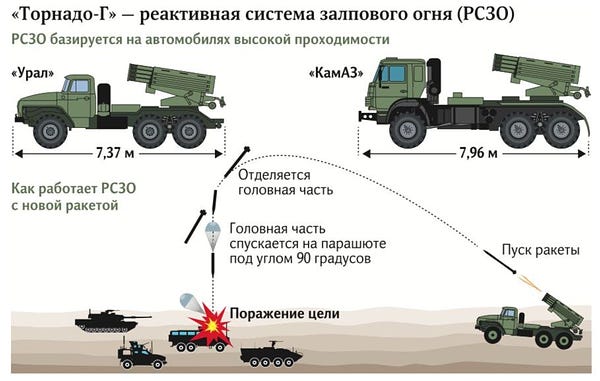
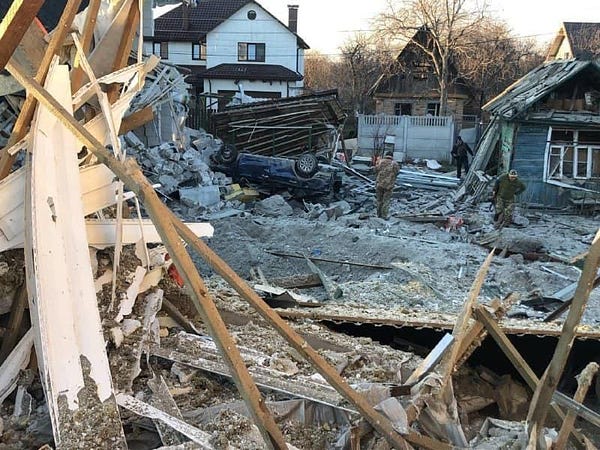
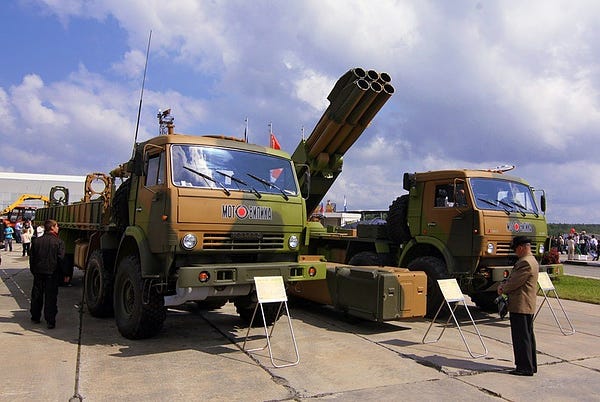
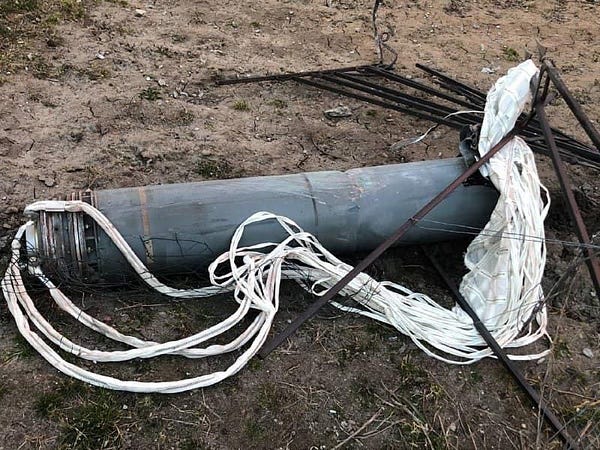
There are two ways of examining this, the microcosmic tactical-view scale, which deals with the unit tactics, and the operational macro sense. We’ll delve a bit into both. In the operational one, the advent and proliferation of longer range precision systems likewise greatly inhibit the ability of a maneuver force to prosecute an offensive in that supply lines (dumps, HQ’s, etc.) are all within easy reach of HIMARS and Smerch style guided precision munitions.
Some, like Strelkov, have recently rhapsodized on the notion that Russia is ‘completely unable to move forward’ in any significant operational sense, and is locked into a stalemate, because as soon as its forces create a push, the supply/logistics nodes feeding that advance are immediately targeted by things like HIMARs, loitering drones, GPS-guided artillery, etc., which grinds the offensive to a halt for lack of supplies.
Many have used this reasoning to rationalize Russia’s purported ‘failures’ in places like the Kherson front, though that is patent fallacy—as the pullback in Kherson had everything to do with the imminent threat of catastrophic river flooding from the potential destruction of the Nova Khakovka dam, not Russian forces’ inability to cope. In fact, several high profile AFU accounts have penned long, ‘scholarly’ twitter threads espousing just how well Russia adapted to the HIMARs threat on its rear depots in the Kherson region by distributing ammo concentrations. But of course, it’s easier to adapt when you’re only set on defending—but the topic of this discussion is one of attack: maneuvering forces pushing an advance in the signal heavy, ‘naked’ modern environment.
The totality of the NATO and ‘Five Eyes’ infrastructure is being utilized 24/7 as a sort of vast rear-end cloud-service and mega-processing/computational-cycle capacity for Ukraine’s frontline forces. Hundreds of satellites, including dozens of imaging ones with 5cm/pixel resolution, skim every inch and quarter of Russian territory, searching for actionable hidden targets. The data is then processed and collated by thousands of fulltime NATO/Five Eyes analysts working in distribution centers all over the world, then fed directly to the Ukrainian crews by way of Starlink and other datalinks, which Ukraine can then sub-distribute via their innovative ‘Nettle’ integrated system to feed those targets to a variety of sector artillery and other systems.
We’ve got a glimpse of this months ago when documents were leaked which demonstrated the exact work-flow by which this NATO/Five Eyes superstructure identifies and transmits the positions of every imaginable Russian unit, down to the barest granularity. It showed papers typed up by the army of analysts poring over the satellite cluster footage, which have endless lists of high-value Russian targets, catalogued, categorized, etc., with their exact coordinates and associated reference photos.
And of course this is not to even mention the fleet of AWACs that collect radar data around the clock from the Polish and Romanian airspace, RQ-4 Global Hawks, with their SAR radars that photograph Crimea daily from the Black Sea, the OTH shortwave radars likely doing early warning detection on Russia’s airforce flights from thousands of kilometers away, and more. In fact, it’s even been suggested that U.S. forces use seismic sensor data to track large Russian force movements. The Soviets themselves capably used this tactic against the Mujahideen in Afghanistan.
This CNN report also featured NATO personnel admitting that target data from their AWACs is passed immediately to the AFU: https://www.bitchute.com/video/hhUUBaCbuFCm/
And here you can see a Ukrainian console getting instant real-time location data of a Russian jet fighter fed to it by way of the Nettle datalink, likely from some form of NATO/Western intel.
We saw in Kherson and many other places, anytime the AFU launched a wide offensive with large, visible mechanized column pushes, they were instantly spotted, tracked, and decimated from long range. But recently in Ugledar, it appeared that Russian Marines fared no better under similar circumstances.
Their mechanized columns too could not cross that dreaded no-man’s land of frozen farm fields before getting ID’d. Granted, it appeared that mines played the biggest role in that, as some intrepid readers have pointed out. However, I must counter with the point that the only reason they even hit the mines to begin with, is because they were under orders to do a mad dash across the fields, from cover to the next position in the dachas section of lower Ugledar, for the very reason that lingering and taking their time negotiating the minefields would have exposed them to enemy ISR and immediate risks from the air in the form of drone-corrected strikes, etc. If it weren’t for that ubiquitous observational threat, they could have leisurely crept along with a mine-trawl, or called up a slow-working UR-77 mine clearer.
To tangentially expand on, briefly, how one is theoretically supposed to deal with such threats, and why it doesn’t quite work as well in practice as in theory, first let’s examine how, to counter artillery, we know you need your own drone-ISR systems, and preferably augmented by counter-battery radars which can place the vector and distance of the enemy shot for you to retaliate.
But as seen in this Patrick Lancaster video, a Russian soldier gave a frank answer in describing the complexity, difficulty, and irregularity of dealing with these issues. He states that they used Russia’s most powerful ‘Zoopark’ counterbattery radar, but the system is SO ironically powerful that it becomes an immediate target for anti-radiation sources that can home in on it like an IR missile to a burning flame.
So then they moved the system farther behind the lines, but the AFU’s artillery discipline is such that they still manage to scoot-n-shoot their guns away from danger by the time one can use the system to locate them and respond. Now, to be clear: this is not a blanket characterization of how ALL such scenarios/systems work. We have an abundance of evidence of the same Russian Zooparks (and others) working fantastically to obliterate AFU’s positions with counter-battery fire. But it’s just an illustration of the difficulty and unpredictability of these things. If you get a really good enemy crew, with strong discipline, they can negate such systems.
This to a large extent explains the type of perplexing, small-unit warfare we’ve been witnessing up to this point. Wagner themselves described their most successful tactics in Bakhmut: it consists of small groups of men, 8 or so max, operating independently, storming forward to intentionally close in within 50-150 meters of the AFU positions, so as to prevent the enemy’s rear artillery from firing, for fear that they will hit their own men. They call it, “riding the shoulders of the enemy”. But the key detail is a religious devotion to staying separated in small, isolated fire teams.
This partly explains Russia’s decision to lean on smaller, detached BTG’s in this conflict. And why in so many seemingly bewildering videos, we see such small assault groups or lone tanks operating so often on the frontlines. In today’s highly network-centric, integrated, signal and observational-overload battlefield, it’s simply near-suicide to clump up together into large groups.
II.
So the big question is: how can Russia actually push forward, break through enemy lines, and successfully conquer territory en masse under such conditions? Is Strelkov right, and Russia is doomed to incremental positional hacky sack?
It’s a very broad topic, as there are many facets to covering the feasible ‘solutions’ to this dire dilemma. Let’s delve into the ones already being used effectively, and those likely to be used in the coming escalations.
1. Atmospherics And Smoke Screens
Firstly, to get the simplest tactics out of the way, let us mention a few chief limitations of all these whiz-bang omnipresent ISR systems. The first of which is environmental/atmospheric conditions. In short: drones and satellites really hate clouds, and even with the advent of ‘remote sensing’ and SAR satellites, they can’t really penetrate cloud-layers as well as the MIC salesmen would claim—at least not at the granularity of seeing individual units and combat groupings.
Fact is, when there’s heavy cloud cover and/or fog, drones can become utterly useless, and same goes for satellites. If one were really up to the task, one could use serious weather modification capabilities like cloud-seeding, to create a perma-overcast conditions to blind one’s enemy. Unfortunately, it would blind you as well.
Several times recently, there’s been reports of Russian offensives (in both Kremennaya and Ugledar) grinding to a halt because there was severe cloud cover that greatly diminished their CAS and negated their air superiority. But, conversely, there were other times they considered it an advantage in some fronts, and pushed in specifically when there was cloud cover and the AFU’s drones were blinded.
The less-drastic compromise can be using a variety of smoke-generating systems to conceal your movements, of which Russia itself not only has many, but has even used a lesser version in the very theater we discussed above, when the Marines pumped smoke from their BMP-3’s to advance.
Planes can drop huge smoke curtains as well.
Of course, this is just a small-scale, temporary measure against more localized ISR, but it was worth mentioning to get it out of the way.
2. Satellites and Kesslerization?
The most effectively practical method to defeat the most potent form of Ukraine’s observational abilities would be simply to shoot down the satellites. Russia has threatened to do so already several months ago.
However, the U.S. replied that it would react in kind. Although, Russia was specifically naming the group of commercial satellites like Maxar, rather than U.S. military satellites. Today, Russia even repeated the threat after NATO announced a new program to radically boost space recon cooperation into a new fleet of highly centralized and coordinated military/civilian satellite constellations aimed at total domination of the C4ISR domain.
But could/would Russia actually shoot down the satellites? We know they can if they wanted to: they demonstrated it last year as a show of force, and if you watch to the end of the linked video, the U.S. generals were quite worried about the fact.
Some have asked: why doesn’t Russia jam/blind these satellites with the vaunted and newfangled Murmansk and Zhitel (among others) systems that they brag so much about? The problem is, those systems jam signals like radars, GPS, etc. But the chief types of satellites that are the true thorn in Russia’s side are the electro-optical, i.e. “photo” satellites. How can you jam a telescope-like satellite with a powerful zoom camera that is taking pictures of your facilities and troop movements? You can’t “jam” a camera lens.
The only possible countermeasure for those is blinding them with a laser. And there’s long been a string of reports that claim everything from Russia having already blinded U.S. satellites, to Russia threatening to do so and testing it, to Russia currently building the capabilities to do so.
While it’s true that Putin triumphantly announced Russia’s new ‘Peresvet’ laser last year, most lasers of this sort—including the U.S. navy tested ones—have a fairly short range of only a few kilometers at most. Satellites, of course, travel hundreds or even thousands of kilometers up. However some reports claimed that the Peresvet can blind satellites at 1500km range.
And reports from earlier last year claimed that Russia even fielded a new type of laser called ‘Zadira’, which is allegedly even more powerful than the Peresvet, and are already using and/or testing it in Ukraine.
Skeptics should recall that not only did Russia basically invent the laser and maser, Russian scientist Nikolai Basov even receiving the Noble Prize for the act, but Russia has had a laser tank as far back as the early 80’s: https://en.wikipedia.org/wiki/1K17_Szhatie
And the Soviets had a laser called Terra-3 which was said to have glitched out the Challenger space shuttle. Per wiki:
Shuttle attack rumor
Terra-3 is the topic of a widespread claim that the IR laser was used to target the Space Shuttle Challenger during its 6th orbital mission on 10 October 1984 (STS-41-G). According to reports by Steven Zaloga, the Shuttle was briefly illuminated and caused "malfunctions on the space shuttle and distress to the crew," causing the United States to file a diplomatic protest about the incident.[6] This claim appears to have started with former Soviet officials, notably Boris Kononenko.[7] The crew members and "knowledgeable members of the US intelligence community" have denied that the shuttle was illuminated by the Terra-3.[8]
So can Russia’s lasers really blind satellites? No one knows for certain, though likely they can. However, the most advanced U.S. Keyhole opto-electrical satellites most likely have counter-measures against this, i.e. simple remote-controlled panels that close over the lens to prevent the sensor from getting fried. The laser at that range likely does not have the power to outright burn up the entire satellite, but rather fry the delicate imaging CMOS sensor behind the lens.
Also, it is likely far more difficult to do this than it appears. Firstly, to do any damage, most laser weapon systems have to keep the laser trained onto the target for a certain period of time. In short range tests, 5-10 seconds usually ‘burned’ the target up. However to damage a sensor 300-500km away (the orbit of most Keyhole satellites), the laser would likely have to accurately ‘track’ the satellite across the entire sky. But satellites move extremely fast, and the laser would have to basically thread a needle by keeping the beam on the sensor as the satellite flies across the sky. This would take much greater abilities of digital tracking, automation, fire-control systems than most people think.
Sure, commercial and prosumer telescopes have abilities to track stars across the slowly moving sky, and presumably a similar tech can be employed but it’s worth mentioning how technical and difficult this is.
Secondly: between the U.S. and “partners”, they have many such imaging satellites, yet Russia probably has a very low amount of these prototype laser systems. It would be very difficult to blind all the satellites in a timely manner. With that said, we don’t know for certain—Russia could have more of them than we think—and it could always blind one or two as a warning, forcing the shutdown of the rest.
The most trusty and dependable method in the end is the good ol’ Nudol Missile.
The intrepid readers will say, the U.S. claims they would ‘respond’ if Russia took out their satellite(s). But, there’s one very interesting angle to this scenario that few have foreseen.
Sure, the U.S. can retaliate and take out Russia’s satellites after Russia takes out all the U.S. ones. But guess who that leaves as the sole dominant space-hegemon and satellite power in the world?
That’s right. This guy—who will become not only the happiest, but the most dominant player in space with a sudden massive and historical strategic advantage over the American adversary. Russia and the U.S. would both be sent back to the stone age, satellite-wise, but China would now enjoy virtual, de facto space hegemony. Do you think U.S. cares to risk such an unthinkable option? Not very likely.
In short, the U.S. goading Russia into a satellite war is like a guy with a Bugatti threatening to ram someone’s ‘92 Toyota Tercel in a roadrage incident. They have far more to lose. That’s not to disparage Russia’s space capabilities, but rather to highlight that U.S. will be the really big loser in this case. The Toyota guy can get a new bumper for $125 while the other guy will have $100k+ in damages.
So it’s for this reason that I believe U.S. really doesn’t want Russia to up the ante and give Russia reason to start taking out satellites.
3. Asymmetrical, Hybrid Warfare, And Light Assault
The next way to minimize the dominance of an enemy’s modern 4GW/5GW capabilities is by using a lot of asymmetrical warfare tactics. By simple point of necessity alone, the AFU has already been doing this. Russia has too, but Ukraine has pushed the envelope further and faster in some areas, in terms of asymmetrically circumventing the signal dominance of the battlefield.
Things like 3D printing drone bomblets, maskirovka of every variety (feints, dummy props like scarecrows and blowup tanks to fool recon), unconventional/hybrid force usage—the eschewing of large, slow armor groupings and instead utilization of insurgent-style ‘ISIS technicals’ to trade safety for space and time.
The Kharkov assault was a somewhat successful example of this (I say somewhat because, while objectives were achieved, they took heavy losses—which exposes the downside). The AFU chose a balls-to-the-wall, safety-last strategy which banked on surprising and overloading recon OODA loops by crossing large swaths of territory very quickly on fast moving, light vehicles, and creating mass panic, overreaction, and disorientation on the receiving side.
Of course, this doesn’t work everywhere. In Kharkov it relied on heavy forested areas where cover could conceal the movements. Not to mention the 5:1 or 8:1 (according to some sources) numerical advantage over what was effectively an Allied volunteer garrison; but it’s an example in one place and time.
Russia, too, used the ‘light assault’ with hybrid warfare (activation of partisans in conjunction with Kherson assault, etc.) fairly effectively early on, but with the same downsides, as there were much more casualties than usual. And going forward, this is not the strongest strategy of choice.
4. Stretching Your Enemy To The Breaking Point
Here’s where we start getting to the real meat and potatoes of what Russia will likely employ. A related strategy they can use operationally on a much grander scale, and which I believe we could likely see very soon in the coming offensive, is the intentional stretching of the front to the breaking point, exploiting the AFU’s weaknesses of manpower and troop quality. But most importantly, apropos the current topic, it would put a huge logistical strain on that back-end NATO C4ISR server-farm.
If Russia opens multiple new broad fronts, it exponentially increases the raw man-hours, processing power, etc., needed to keep track of everything and relay it to the AFU. Those aforementioned, vast churning computational-cycles of NATO’s backend would be strained to the limit to keep track of such broad distributions of forces and possibilities. Further, it would stretch and diffuse the key Ukrainian guided systems, like HIMARs, which they have relatively few of, thus further nullifying the ISR edge, as NATO’s target data is useless if the systems they’re sending the targets to aren’t effectively positioned, or are diluted all over the country.
For clarity, imagine that most of the war takes place on one near front. The AFU can concentrate all their precision systems like HIMARs, M270’s, etc., there, and use them in concentrated fire on a relatively smaller area, where NATO surveillance can also much more effectively and efficiently keep track of Russian rear areas, C3, supply, logistics, etc.
But spread over multiple broad fronts, Ukraine would have no choice but to dilute its most powerful precision units, spreading them hundreds/thousands kilometers apart. With that said, the risky extreme of this, as we discussed in Part 2, would be Russia utilizing fronts which are TOO broad and far apart, thereby passing a point of diminishing returns in benefits. But this only really applies to the distant extremes, like a front in west Ukraine, Volyn province. Though now, there’s been some slight indications—albeit it could be the usual maskirovka feints—that Russia could still choose that dreaded first vector from my Part 2 report. Not only have Russian drones been spotted mysteriously buzzing the Zhytomir region (west of Kiev) of Ukraine for the first time since the start of the SMO, but there’s been ‘strange activity’ in far west Belarus, with reports witnessing ‘Wagner troops’ (or troops that “looked like Wagner) in Baranovichi, Belarus, near the Polish/Ukrainian/Belarus border. This has compelled Ukraine to station 20,000 troops there in preparation for a possible Russian assault from that vector, as per the reputable Ukrainian ‘Resident’ channel:
Ukrainian TG-channel "Resident" shares an insider: The General Staff is concentrating 20,000 troops of the Armed Forces of Ukraine in Zhytomyr to repel a possible Russian strike from Belarus.
Zhytomyr would be in line with the ‘Macgregor Axis’ of our previous Part 2 forecasts. Such an axis could very well accomplish what we mentioned above—the stretching and straining of Ukrainian/NATO intel/recon capabilities, which would give large Russian forces more headroom in advancing under these digital-dominated conditions. In short, it splits enemy resources in these domains, puts greater strain on satellite (and other SIGINT, ELINT, etc.) resources, requiring satellites to orbit in wider, unpredictable, less coordinated orbits, which degrades and increases NATO’s own reaction times and OODA loops.
5. EW Bruteforce
It’s also possible to brute-force and overpower your enemy’s electronic infrastructure with the large-scale deployment of powerful EW systems. But one issue most overlook, is that powerful jammers also jam your own devices.
Specifically in the sphere of drone warfare. If you have one of these standard battlefields we see so often, wide, expansive fields with a no man’s land in the middle, drones from both sides hovering above and correcting artillery fire—and you position a powerful Krasukha system behind your artillery and start flooding the skies above that field with jamming signal, you’ll FUBAR your own drones as well as the enemies.
This has already been mentioned several times in interviews with Russian soldiers, where they bemoan the annoyance of not being able to use their anti-drone guns or EW systems in some circumstances as it interferes with their own drones as well.
Now, if you had your own natively-made drones with custom secret bands that your military engineers designed to be specifically immune to the jamming bands, it could be a different story. But unfortunately, that’s the problem with both sides relying on the same Chinese DJI products, rather than constructing indigenous devices.
With that said, the actual effect that Russian EW is having on this war is greatly underestimated and understated. Because of Russia’s supreme OPSEC, and the vast amounts of drone footage we see, most assume that Russian tech is sitting it out, or is ‘underwhelming’. But in fact, if you pay attention to the reports and interviews as fastidiously as I do, you’d see that Ukrainian forces constantly complain about the sheer EW dominance prevailing against them. Hell, our last report was about this very fact. And there have been many reports of entire frontlines blacked out by Russian EW:
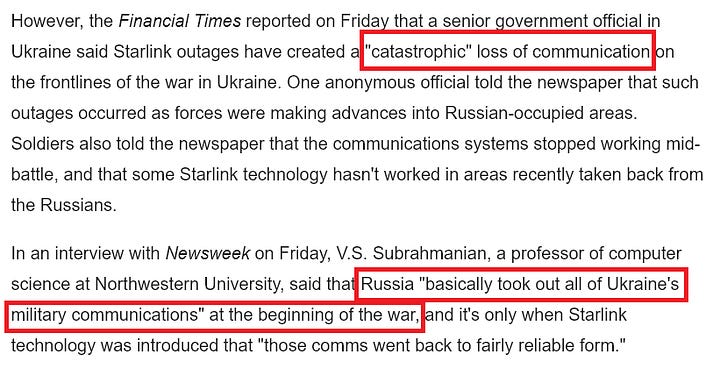
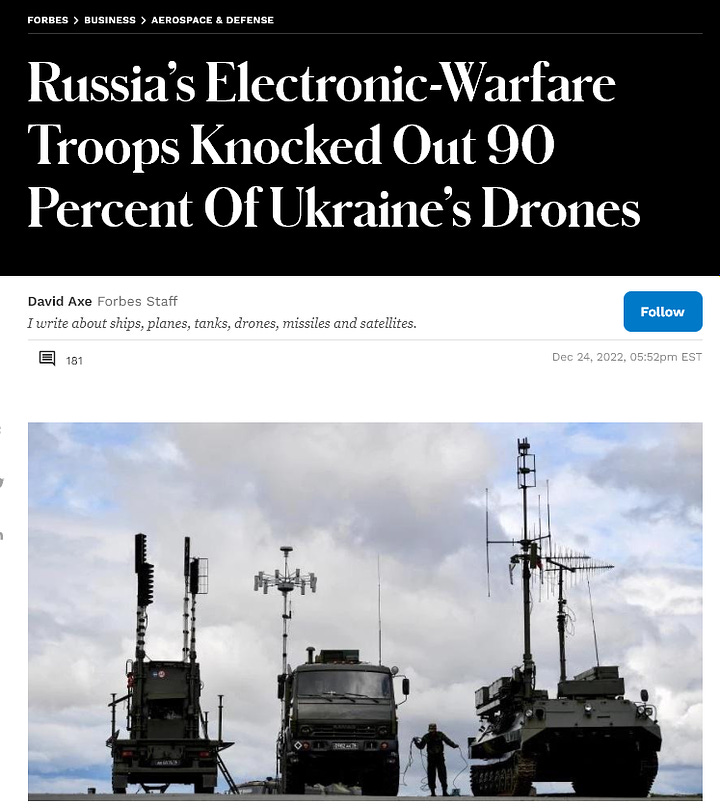

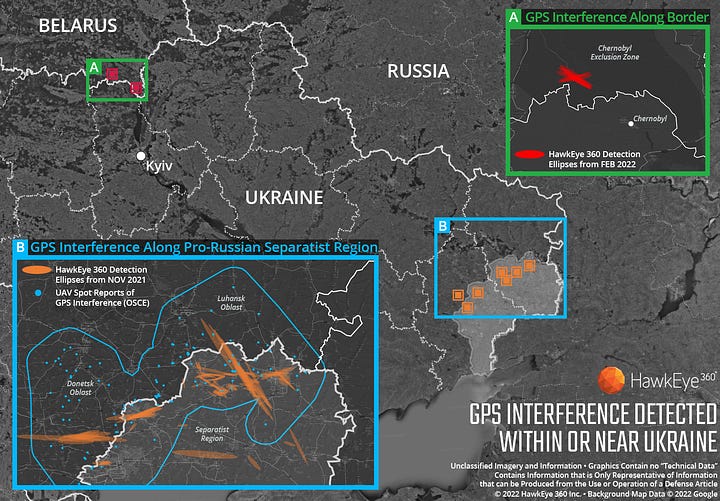
But there is even much more beyond that. A large portion, and dare I say majority, of AFU drone-related videos we see are against DPR/LPR or volunteer forces. Against actual Russian brigades, their drones are almost completely nullified, barring the one point of weakness when Russian units are advancing and happen to over-extend past their EW coverage.
6. Refining The Reconnaissance-Strike-Complex
The other more straightforward and logical method is ironically the most systematic and difficult: one way to defeat the enemy in modern conditions is to simply be much better trained, more efficient, and in general have a tighter, stricter, faster and more accurate armed forces.
Specifically, this is in reference to things like the aforementioned OODA loop, which is encompassed in the famous Russian conceptual doctrine of the Reconnaissance Strike Complex (RSC) and Reconnaissance Fire Complex (RFC). In essence, these doctrines have to do with refining the process and ‘workflow’ of integrating and streamlining the various systems and trainable procedures involved in acquiring a target and effectively relaying the data to gun crews in short time. Russia has said to have gotten its RSC capabilities down to as little as 10 seconds, up to 2-3 minutes for some systems.
Thus, the more one can systemically enforce a high standard in all your formations, and the tighter they can operate, lowering reaction times in these types of decision loops, the more you can outpace an enemy’s own loops and thus negate a large part of their multi-domain 5GW / C4ISR capabilities.
That may sound like a techno-babble-word-salad, but to simplify it: if NATO has all these powerful satellite recon and ELINT capabilities, they can be partly negated if Russia’s better training allows them to make decisions faster on acquiring-targeting-engaging a target. If NATO warns the AFU, for instance, that a large Russian force (or contingent of aircraft) is moving in on a particular sector, this spoiled ‘element of surprise’ can be partly negated if Russia’s RSC / OODA loops are so well-honed that they out-perform the AFU’s own capabilities to relay needed info at the tactical level, even in spite of the Ukrainian force’s general knowledge of the Russian advance. In essence, if you KNOW an enemy is across the field from you because someone with a satellite tells you, but that enemy’s recon-to-strike loops are much faster than yours, then it will matter little, as he will still beat you to the punch.
But as mentioned at the start, this is the most difficult option by far, because it relies on a ‘no shortcuts’, hard-work and elbow grease mentality of simply refining the entirety of your armed forces to an extremely high capability level, rather than relying on ‘gimmicks’ like surprise attacks or maskirovka to muddy the enemy’s battlefield perception.
But doing so also requires a parallel effort in modernizing your forces such that the technological backbones and infrastructure can effectively support the increased load of these standards. One way Russia has done this in recent years, is by steadily introducing ‘network-centric’ systems to digitally integrate their battlefields in such a way where the interoperability of systems and units can allow them to disperse targeting data in a timely and streamlined fashion. Russia has begun to use systems like the Strelets-M (Sagittarius-M) and Andromeda-D battlefield management systems (part of the Ratnik program) which, in layman’s terms, gives soldiers a console with a digital map, allowing them to input enemy positions with the touch of a finger, and instantly send those positions to a variety of fire units to engage the enemy.
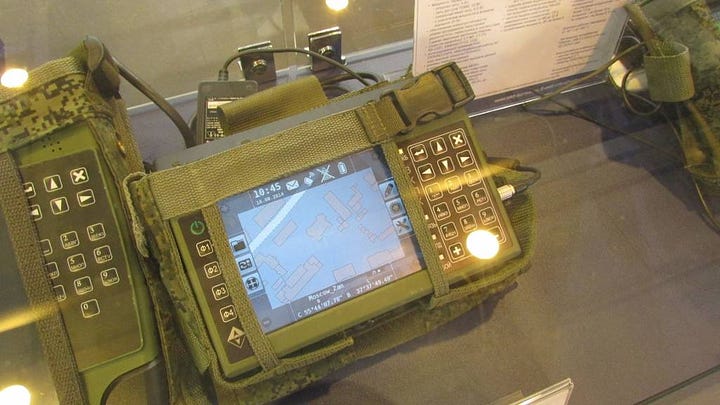
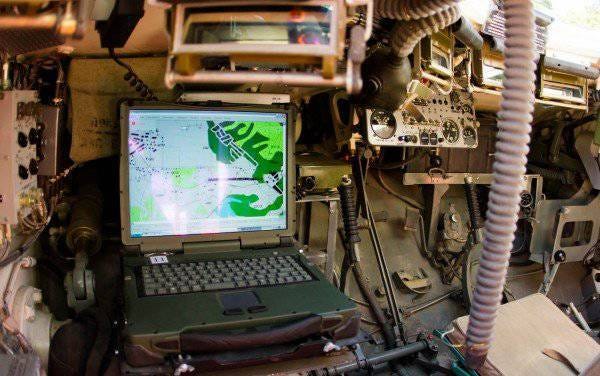
Like U.S.’s Link-16 system, this allows a Russian ground soldier to even pass targeting data up to a frontline bomber like Su-34, if it’s equipped with a corresponding system. Only several weeks ago, we got one of our first glimpses of a Russian artillery unit officer using such a console: https://www.bitchute.com/video/WII88BHXBghz/
The system has already been successfully fielded in Syria, where Russian soldiers fed targeting data to Su-24M bombers, with a reported “100% accuracy”.
So ultimately, the question is—does Russia have the advantage here, which can nullify NATO’s abilities? We have heard some reports (mostly from militarily adjacent figures, like DPR soldiers, filtered through doomers like Strelkov) and complaints about some serious deficiencies in Russia’s OODA loops when it comes to artillery target relay.
One such complaint described how an AFU unit was fording a river, and they relayed the target data to Russian artillery somewhere in the rear. But the decision-making process had to go through so many chains of command and authorizations that by the time the shells started flying, the AFU units were long gone.
But it’s always easy to hand-select small incidents that happen to agree with one’s narrative. There may be some localized issues with certain units as there are with any large fighting force. But there is no evidence to suggest that the problem is endemic to all combat units. The fact is, you do not kill your near-peer opponent at unprecedented 10:1 ratios, giving them hundreds of thousands of casualties, if your decision strike chains are that unserviceable.
The truth is, the West’s militaries are not artillery forces. Ukraine has been praised as combining the best of the West’s capabilities, including their most modern, advanced, and capable systems (PhZ2000’s, Krabs, Archers, Danas, Caesars, M109’s, M777’s, Zuzana’s, etc.) and smart-munitions, with the superior Soviet artillery doctrines to create an alchemized force of unprecedented combat potential. And by ‘unprecedented’, I mean literally better than the American military. Don’t take my word for it, read this famous twitter thread from ex-DoD expert Trent Telenko who exults in the AFU’s unrivaled and revolutionary networking/integration synthesis which makes their artillery force far superior even to that of the U.S. army. Here’s an excerpt:
“It is a true distributed software environment that reduced request for fire to trigger pull from 20 minutes to 30 seconds. By comparison, the US Army did that call to trigger pull in 5 minutes in WW2, 15 minutes in Vietnam and one hour currently. No, that isn't a typo. The increased US Army time 'from call to trigger pull' has to do with trying to prevent friendly fire plus the inclusion of JAG officers in Division artillery fire control centers doing rules of engagement/collateral damage vetting of calls for fire. In 2006, when US Army Special Forces task force hunting high value targets was given direct access to an MLRS battery with GMLRS rockets - without a JAG officer poisoned chain of command - got it back down to Vietnam 15-minute levels in Iraq, thanks to the Blue Force Tracker. This didn't last long with the Obama Administration thanks to Taliban high value targets using their own kids as human shields followed by cellphone photos of dead kids. Then everything went back to the JAG officer game & the Special Forces started buying loitering drones.”
Many American military experts subsequently agreed with Trent’s trailblazing exposé on Ukraine’s GIS Art and ‘Nettle’ systems. (You can read more about it here: https://themoloch.com/conflict/uber-for-artillery-what-is-ukraines-gis-arta-system)
So, what’s the point? That this unrivaled capability in the hands of a Ukrainian force that not only has the single greatest, most modern artillery howitzers, the most accurate, and best-ranged munitions, but also the most powerful combined force of all NATO/Five-Eyes’ ISR and satellite recon—THIS historical force of nature, is getting its clock cleaned by Russian artillery forces. Sure, the AFU masterfully get in their punches too here and there. But as a totality, Russian artillery forces, utilizing Russia’s own revolutionary Reconnaissance-Fire-Complex capabilities are roundly wiping the floor with the Ukrainians in the artillery war.
Sure, the naysayers will say it’s because Russia has much more ammo to expend—but hey if those newfangled Western systems and whizbang GIS Art capabilities were so great, shouldn’t the accuracy and time-to-kill capabilities overmatch the Russian ammo advantage?
Plus, Russian forces are now confirmed to be using a variety of their own equivalent systems such as ASUNO integrated artillery control computers which interacts with the Planshet-M-IR system to allow drones and many other systems to network-centrically send targeting data directly to artillery guns, and allow the ‘target to trigger pull’ to be down to seconds. The ASUNO can also, in automated fashion, control entire batteries of multiple artillery units, guiding them to the target in rapid fashion. And videos have already shown Russian frontline artillery forces utilizing the system.
Ultimately, Russian RCS/RFC has proved its mettle by devastating the AFU army so badly, they literally ordered a whole second army from the EU.
7. Economies Of Scale
Thus far, in many ways Russia has employed the method of atomization and ambiguity to most success, simply owing to necessity. They already had an inordinately small force which had no choice but to operate like a ‘ghost’, appearing many places at once, and utilizing Sun Tzu strictures to seem much larger and more omni-present than it really was.
This, in turn, worked in their favor to some extents, because having an already small force pretty much precluded them from ‘clumping up’ in a way that would benefit the ISR-heavy NATO snoopers.
But now, with the expected force of 300-500k (or more) new mobiks joining the fray, there’ll be no choice but to move around large, juicy formations which present ‘target-rich environments’ for that NATO all seeing eye. And this is where the method of distribution can work. By extending the forces to vastly broad new frontlines, they can put a major strain on NATO’s capabilities.
Also, there’s something to be said for the concept of ‘economies of scale’. That is, there’s a certain benefit gained from scaling up one’s forces, where certain redundancies and parallelizations of systems begin to work in tandem in such a way as to become ‘more than the sum of their parts’, conferring additional benefits.
An example is this: up to now, Russia’s airpower has been characterized by many as ‘anemic’, which most don’t realize was due to the small number of forces Russia has actually committed to the conflict thus far. This has reciprocal effects on the function of the entirety of the frontline forces in a given theater. Think of a battle as a sort of eco-system—you’ve seen the famous videos where wolves are introduced into a wildlife preserve, causing a chain reaction of events; whereby the wolf eats the deer which eat the grass, which saps the water from the stream, stifling the breeding of fish. So by introducing a wolf, a miraculous, compounded and seemingly paradoxical chain of events occur, eventually leading to the revitalization of the river and fish habitat.
Russia’s coming escalation includes an increase in troop numbers of all branches, including the airforce. We’ve seen the reports how 400 jets and 300 helicopters are now allegedly stationed outside Ukraine, ready for action.
Similarly, by the force of scale—by increasing the air support to a given frontline, Russia will precipitate a chain reaction in the eco-system. There’ll be more ‘wild weasels’ for SEAD missions, AFU AD systems will be consequently far more pressured and less active, which in turn will compound the active participation of even MORE airpower, in the manner of frontline bombers and attack choppers—now able to more freely operate. This domino effect will cause an increase in the effectiveness of assault units advancing at the enemy, which will keep them from being “static” and stuck in stalemate-y, positional and attritional battles—which will therefore negate a lot of NATO ISR reliant on static targets whose coordinates they can feed to artillery systems. In short, it will avalanche into a more fluid battlefield which hampers and strains ISR systems, particularly satellite recon.
Similarly, the ‘economy of scale’ concept pertains to the increase of Russian AD systems in each sector. As discussed briefly in Part 2, a more ‘densely’ integrated and layered AD system can have compounding effects due to how all the various disparate parts mutually overlay each other like neurons making multiplicative connections to each other.
This will further compound Russia’s ability to intercept strikes at the ‘rear lines’, which is precisely what the biggest (and only) strength of NATO’s ISR capabilities has been. One must understand, due to Russia’s very lean use of force to now, it meant the drastic under-powering and under-utilization of AD systems. But with the coming troop increase, many more missile brigades will be brought in, and will have an additive effect, like standing waves or cymatics systems, where overlapping frequencies become much stronger together.
Many people sat goggly-eyed months ago, watching the perplexing display of the Antonovsky bridge being hammered by HIMARs, often without even the barest Russian effort to intercept the missiles. Most don’t realize that Russia’s small force usage was the culprit. Stretched so thin, even the missile brigades operated anemically, such that hardly a single Pantsir unit could be found to cover the bridge, at least up until the end, when more were moved in.
So, as per the opening question: this is how Russia can advance a large army in spite of NATO’s ISR overmatch. By drastically increasing the troop numbers, which correspondingly increases the AD brigades, Russian AD will generate compounding efficacy by the expanded, overlapping layered integration, which will in turn hamper the AFU’s attacks on rear lines and ammo depots, and thus allow Russian forces to keep supply lines intact and more consistently advance.
Of course, NATO will try to nullify this by up-scaling the delivery of precision systems to Ukraine, to match force for force and attempt to overwhelm those AD systems. To wit, their newest package aimed to send another 18 HIMARs systems (on top of the ~20 Ukraine already has); but it’s unclear if/when they will get those as there appeared some indications it won’t actually come any time soon.
8. Classic Soviet Doctrine Still King
The last operational-scale strategy we’ll mention, which works in nullifying the reach and overwatch of NATO’s ISR systems is to some extent what Russia has already been successfully doing.
In short: engaging in a long range artillery war—though ‘artillery’ is an oversimplification, and is meant to represent all long range systems from shell to tube artillery, to ground and air-launched missiles, etc.
Now this may sound contradictory, as previously we mentioned that movement and maneuver warfare on a broad-front scale can negate many aspects of the modern hybridization and digitalization of the battlefield. But, lacking the ability to open broad fronts, the alternative is posturing your forces in such a way that the critical rear areas are all out of reach of the enemy’s longest range systems, in this case HIMARs. And then simply using the vast ‘artillery’ overmatch to grind the enemy down via a slow, attritional war.
This method relies on having a certain quantitative and qualitative superiority in long-range fires, which Russia does have. Not only does Russia have way more long-range units in general, but obviously much more ammo for them, AND far greater range.
Often, West supporters claim Ukraine’s Western artillery is ‘superior in range’ to that of Russian and legacy-Soviet systems. It’s true only to the extent that some of the most modern Western systems supplied, like M777, Caesar, etc., can shoot advanced RAP and base-bleed ammo giving a range edge of about 30-40km to typical artillery munitions which may peak around 25km. And while Russia does employ many older systems, from the 2S1 Gvozdikas, 2S4 Akatsiya’s, the standard 2S19 Msta-S, and various towed howitzers like D-20 and 30, which all have lower ranges, Russia also employs a raft of other systems that equal or outrange the Western ones. For instance 2A65’s Msta-B, 2S7M Malkas, 2S5 Giatsint-S, 2S19-M2 upgraded Msta-s, and a host of tube artillery from Bm-21 Grads, Bm-27 Uragans, Bm-30 Smerch’s etc.
The point being that, with the extended range superiority, it allows Russian systems to be further back behind the contact line, which means the critical supply arteries feeding these systems can likewise be placed even further back and still retain the regularity of resupply. If your 2S7M Malka, for instance, can fire over 50km, that means it can be 50km behind the frontline. And its primary ammo dump can be another 20-30km behind it. That means the ammo is now 70-80km from the frontline. A HIMARs has a max reach of 90km, however it can’t fire from right on the contact line, it has to be at least 10-20km behind the line to be safe from various shorter range frontline systems, like loitering drones. So, moving back 10-20km, the HIMARs is now upwards of 90-100km from that critical ammo supply feeding the Malka, which is now out of reach.
This is just one example of how having that qualitative range superiority can nullify ISR. NATO’s satellites will spot and transmit the coordinates of that ammo dump, but the AFU can’t do anything about it because its systems can’t reach it. Meanwhile Ukraine’s critical frontline/battalion ammo dumps might have to be only 50-60km from the contact line, and Russia’s systems can hit them. If the AFU moves them much farther back, then suddenly the gap between their operating frontline units and the essential munitions feeding them becomes too large and inefficient, critically slowing their resupply and eroding their combat effectiveness.
Thus, by forcing Ukraine into this attritional long-range fires war, Russia is nullifying the West’s recon capabilities, but only so long as it maintains that qualitative edge in the range of their systems. If Ukraine, for instance, were to begin getting supplied en masse with much longer range systems, like the much-hyped GLSDB’s, then it could theoretically begin to nullify that advantage, and NATO’s ISR overmatch would suddenly again be able to dictate an operational initiative.
Some might argue, such a tactic wouldn’t work against the U.S. Russia is lucky that Ukraine doesn’t have many more long range systems. But if Russia fought the U.S., both sides would immediately Kesslerize each other’s satellites, instantly nullifying all “guided munitions” which require satellite-GPS to function. And guess which country will function better in a classic war scenario?
III.
A last important thing to consider, apropos of the original question, of how well can Russia function in the coming offensive, against the vast overreach of NATO’s All-Seeing-Eye: is who will be leading the operation? Recently, as we all know, Russia appointed Valery Gerasimov to the post of Supreme Commander of the entire war, signaling a portentous shift in the gravity with which the Kremlin now regards the conflict.
This mirthless and taciturn man has been the subject of much speculation in the West, where he at times strikes a sort of mythical figure. Though this is partly owing to his quiet and enigmatic demeanor—shying from the limelight unlike so many American generals enamored with goosestepping and pandering in front of the flashing lights, flapping their gums on CNN for corporate baksheesh.
No, Gerasimov is invariably seen sitting and listening, in quiet observation of those around him. In many old reels of Chechen War footage from the 90’s, one can likewise catch glimpses of him lurking over the shoulders of his more loquacious superiors, alertly appraising their every spoken word.
We discussed here the various doctrines and strategies of fighting in a modern hybrid, next generational war scenario. Gerasimov is the man who practically ‘wrote the book’ on this topic. His famed ‘Gerasimov Doctrine’ has long been held as a sort of apotheosis of Russia’s understanding of the evolution and philosophy of modern war-fighting.
Though there’s much controversy surrounding the actual content of the doctrine itself, and though nothing inside of it is particularly ‘revolutionary’ in thought—it is simply an attempt to understand and distill modern 5GW warfare through the lens of America’s usage of it to foment crises like the Arab Spring—it nevertheless exists as proof that at least the Russian forces are now in the capable hands of someone who intimately understands the intricacies and nuance of fighting such a complex modern war.
Gerasimov's Views on Future Warfare
The doctrine calls for a 4:1 ratio of non-military to military action. Gerasimov emphasizes "the importance of controlling the information space and the real-time coordination of all aspects of a campaign, in addition to the use of targeted strikes deep in enemy territory and the destruction of critical civilian as well as military infrastructure." Also he proposes to cloak regular military units in "the disguise of peacekeeper or crisis-management forces."[1]
Interestingly, the ‘Doctrine’ came about at a time (2013) when Russia was just preparing to engage in its first truly ‘hybrid war’ scenarios in both Syria and Ukraine. And thus it outlined sets of parameters for maximizing effectiveness in these asymmetric and ‘irregular’ style conflicts—how to best leverage small forces with a variety of clandestine actions, from cyberspace, political, partisan, indirect/irregular/paramilitary forces, asymmetric techniques, etc.
However, lesser known is the fact that in 2019, as the Ukrainian crisis was slow-marching toward its inevitable powder-keg moment, Gerasimov, clearly reading the tea leaves, was said to have updated a sort of informal v2.0 of his ‘Doctrine’, which once more re-emphasized the importance of preparing for a more classical, direct military confrontation of bruteforce armies.
In this new address, he stressed the particular importance of preparing ‘precision weaponry’ well in advance of conflict, noting that to attempt manufacturing such weapons only once conflict has already broken out, is a failed strategy that would never work. Simple as this concept may seem, it seems Russia has taken it to heart and prepared well, per his guidelines. NATO, on the other hand, have failed to take heed.
Gerasimov is therefore a man who knows how to read which way the wind is blowing, the patterns and trends of modern warfare, and the nuances of the current crisis. It’s only fitting, then, that the coming, climactic phase will be led by him—a commander who’s become synonymous with leveraging these asymmetrical and irregular tactics to victory. And so, we can remain hopeful that Russia will exercise the finer points presented here, and many others, in the coming days, utilizing both the broad-front tactic to stretch and stress the West’s capabilities, and in select theaters, where the front remains more fixed, continuing to employ its own Recon-Fire-Complex and RSC from long range to throttle and nullify the West’s ISR capabilities.
And let’s not forget, that Ukraine’s own Supreme Commander Zaluzhny, idolizes Gerasimov as the greatest military leader and thinker of the modern age:
Not only has Zaluzhny studied everything Gerasimov has ever written and considers him above all others, but the younger general believes that Russia is the epicenter and fount of all military science in the globe.
Now the world awaits the final climactic showdown between ‘master’ and ‘disciple’.








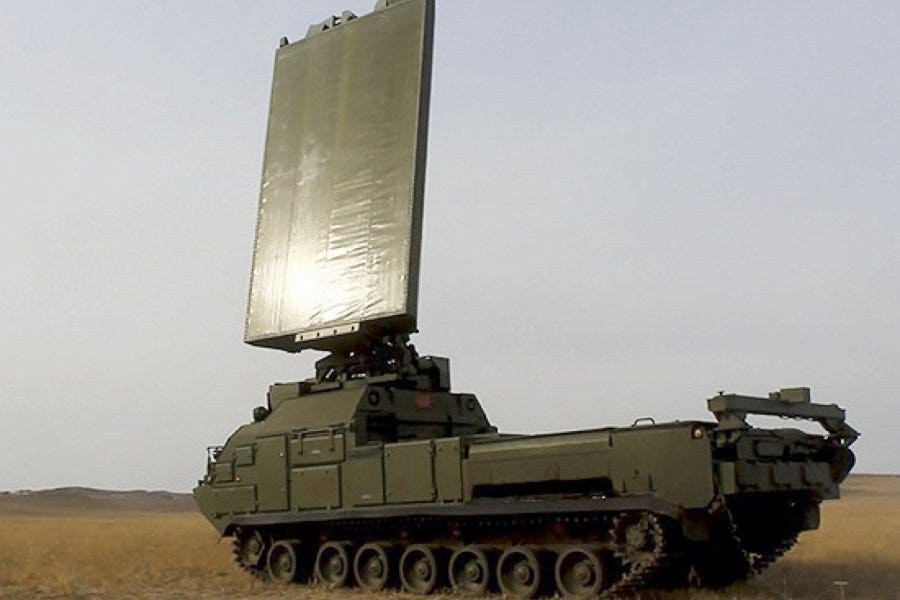
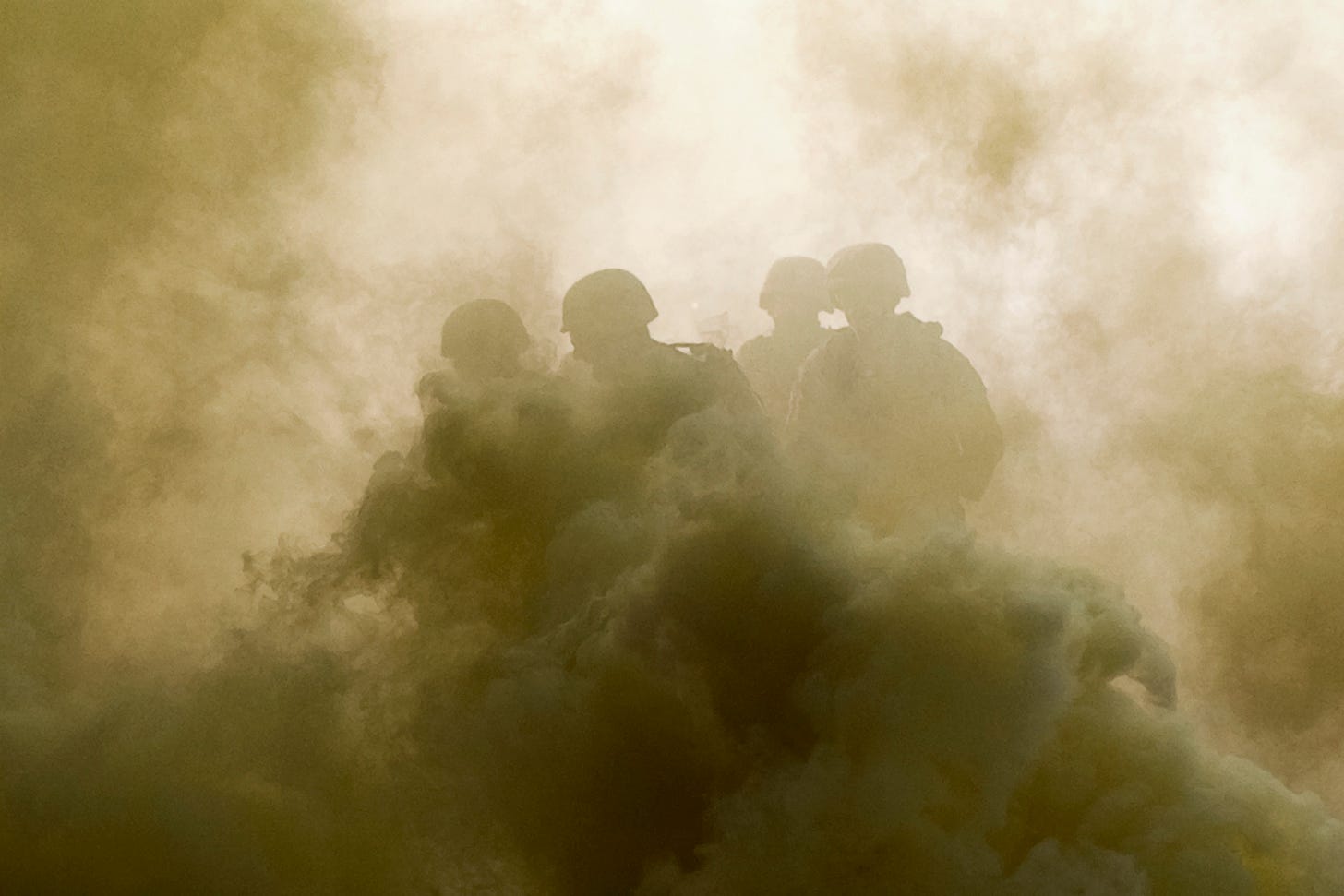



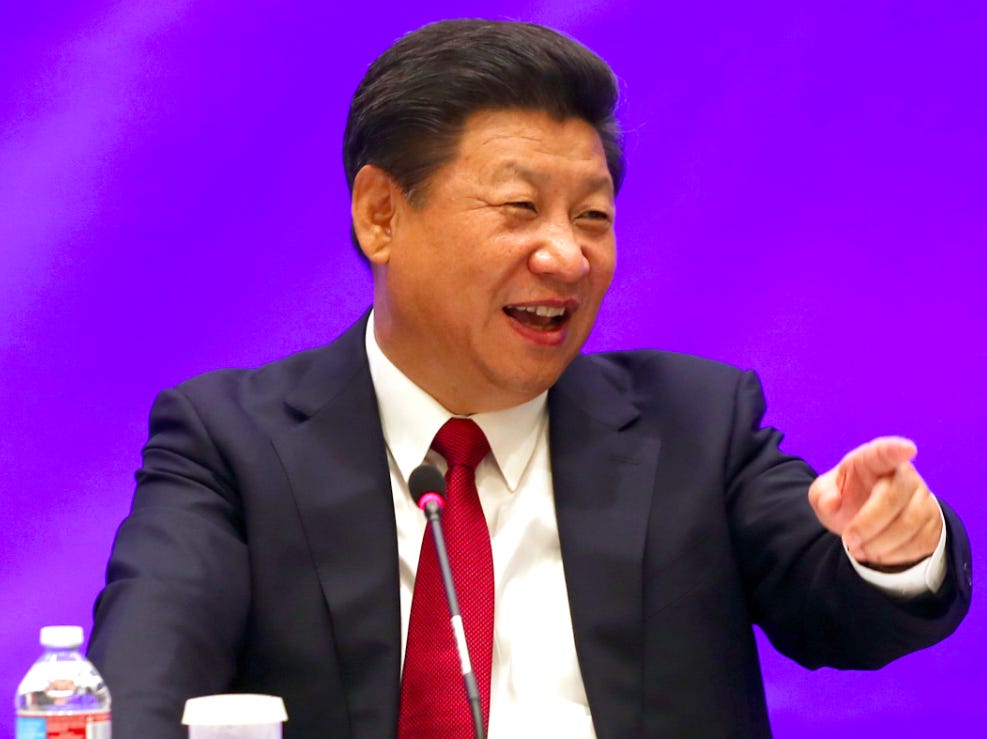

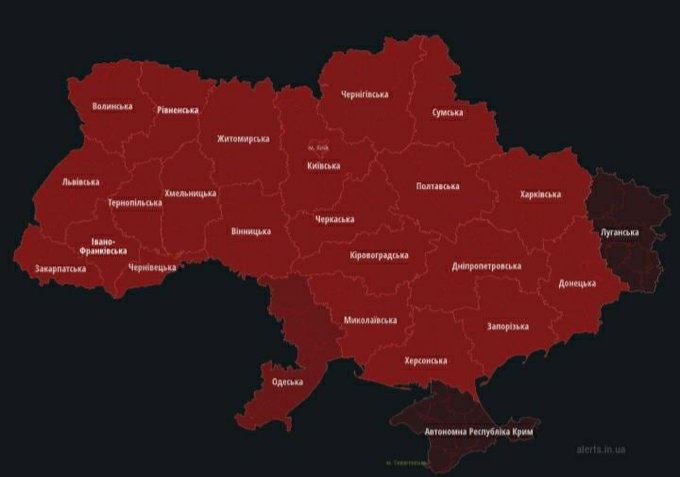
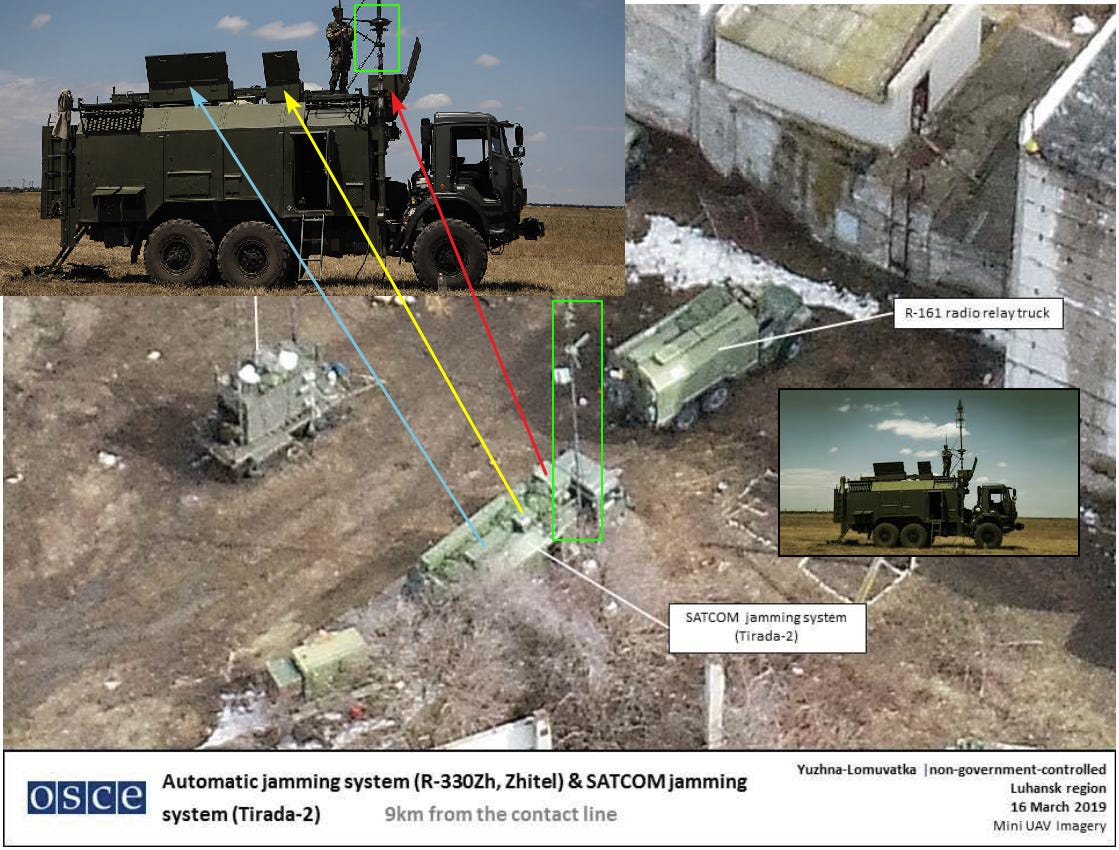
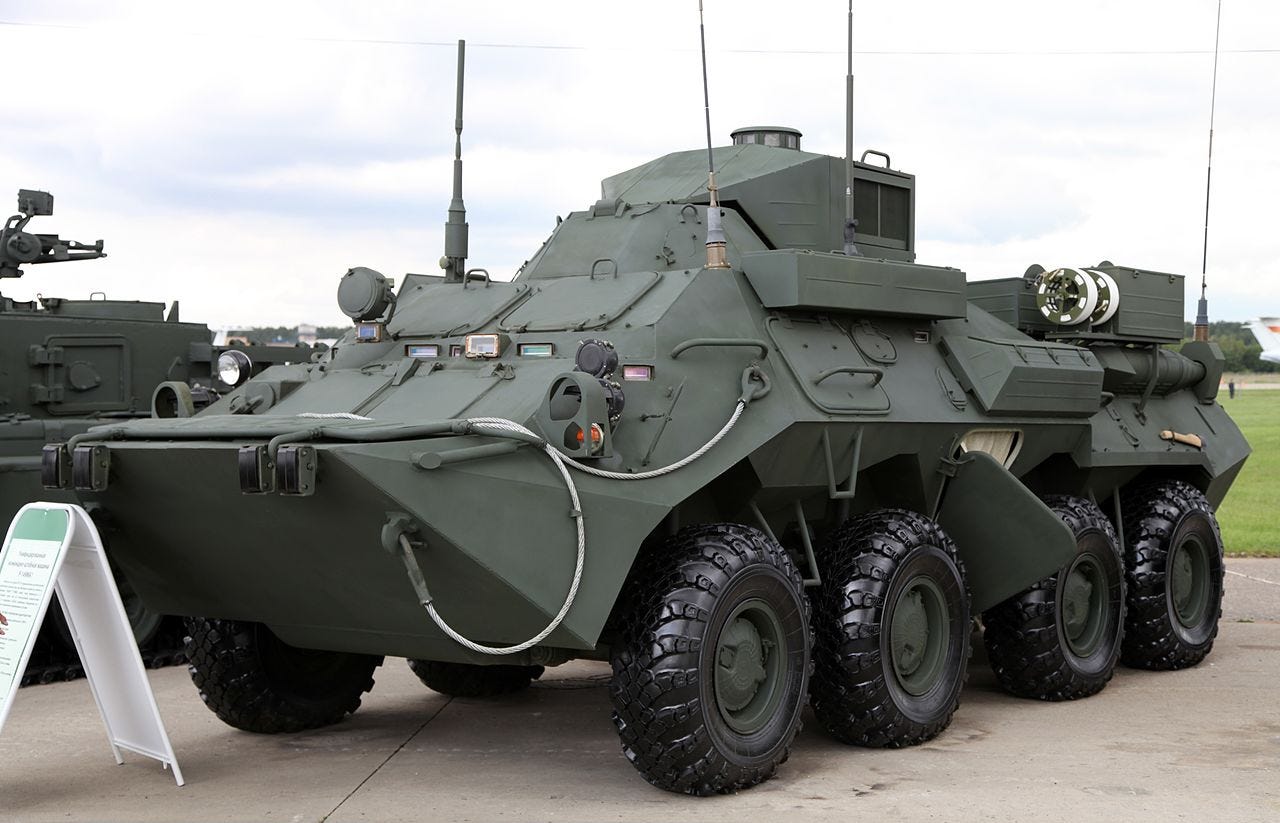
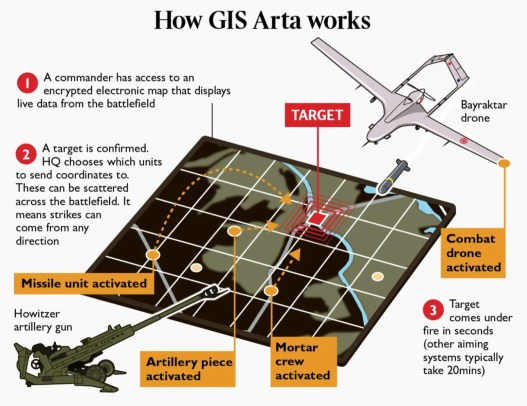
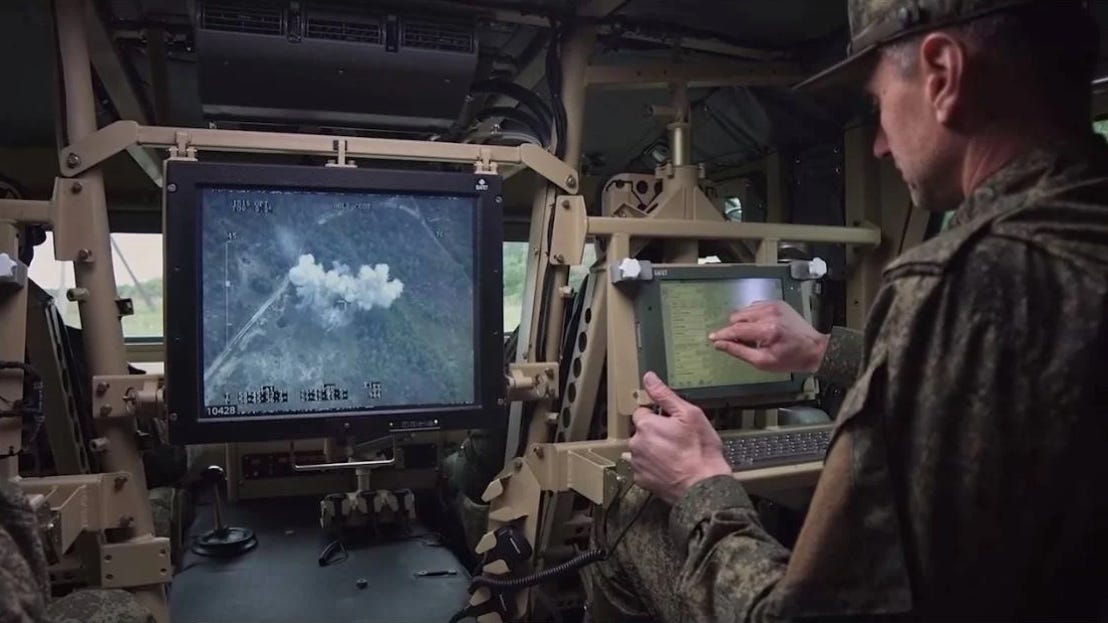

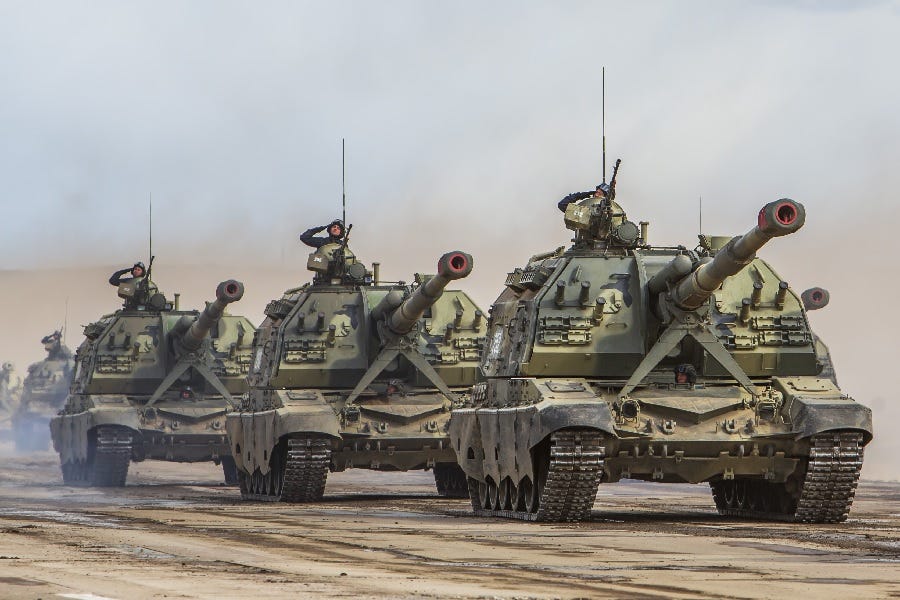
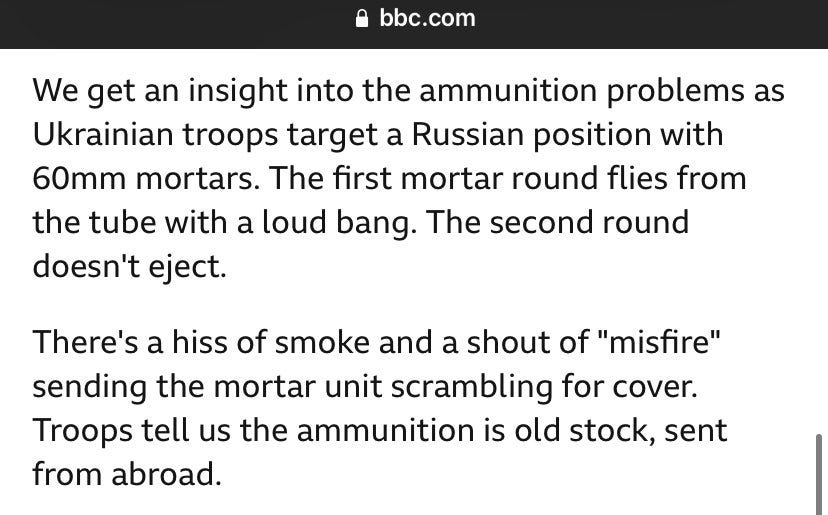
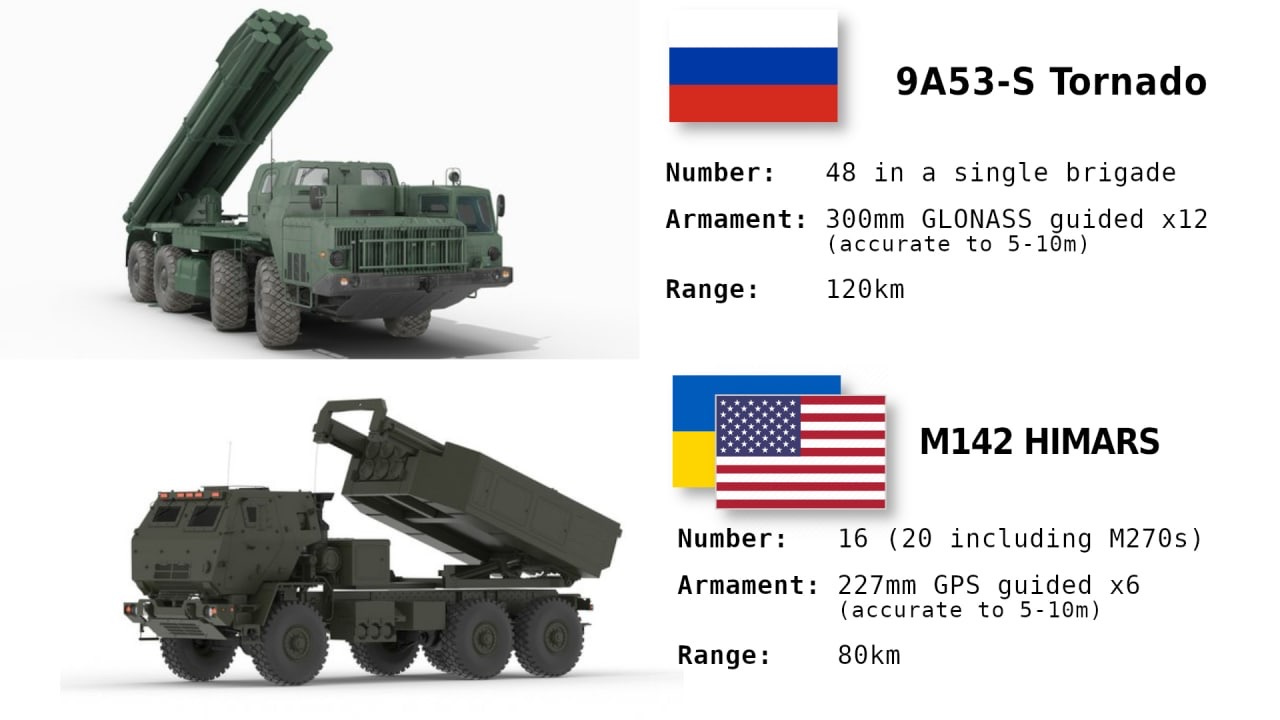
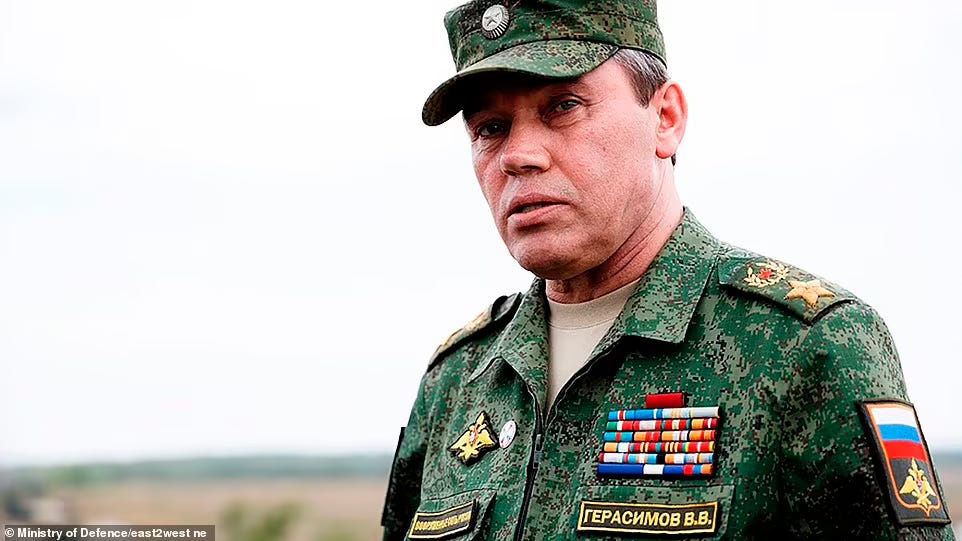

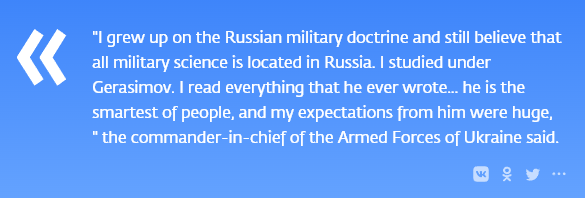
Thanks for the in depth explanation of what you see going on - I have not read much written about ISR in UKR but thought it would be critical.. Some of my thoughts, as an ex-FAC(A), but way out of touch these days. I think that RU has prepared it's forces for NATO/WW3, so a total war. This is why this op is called an SMO. They still need to keep their main forces and abilities prepared for war, not showing them to everyone in UKR. If they decide it is a 'war', then the NATO++ SIGINT aircraft will immediately be targeted, as will the satellites, and probably many NATO installations. So much of what we have seen could well be 'deception' through limitations on equipment and usage, thus the lessons learned may be false once war starts proper - the relatively small role of airpower for example.
Hi, lot's of interesting information and analysis.
One part did cause me to raise a few eyebrows though, when you talked about the 'Gerasimov Doctrine'. To the best of my knowledge, it doesn't exist. The notion was invented by the west (Mark Galeotti to be more precise, after which the MSM and intelligence services ran with it), to be able to point to Russia as the evil mastermind behind whatever bad happened in the world ("it's Russian hybrid warfare! It's Russian meddling/interfering! That's what they do, they have a whole doctrine for it!"), and by attaching Gerasimov's name to it, they tried to label the very thing they were doing themselves (colour revolutions, coups, rigging elections, assassinating people, spreading disinformation through manipulated media, etc) as something foreign, and Russian in particular.
They didn't invent this notion out of thin air, there was something akin to this which was much older, the Primakov Doctrine. That was focused on foreign policy and Russia's place in the world, and not a military policy or doctrine.
Gerasimov in turn, wrote an article in February 2013 called 'the value of science in prediction' (that's the translation at least), in the 'Voyenno-Promyshlennyy Kurier' (I hope I got that name right). It's not a long article, and in it he describes how the rules of war have changed, and how as a result the classical distinction between military operations and civilian ones have become so blurred that it's no longer valid to distinguish them at all. He does this based on what the West had been doing (Arab, spring, colour revolutions, etc), and describes, in general terms, what challenges that poses for the traditional military.
There's two graphic's in his article, one called 'Change in the character of warfare - Achievement of political goals' and the other is 'The Role of Nonmilitary Methods in the Resolution of Interstate Conflicts - The primary phases (stages) of conflict development'. It is analytical in nature, it is not proscribing anything like a practical doctrine.
The article was published in a, by western standards, rather obscure publication, and was pretty much missed by mainstream annalists in the west, until Mark Galeotti picked it up, who recognised the author, and who was instantly intrigued. He then wrote an article about it, came up with the name 'Gerasomiv Doctrine' and pretty much made up a lot of stuff that's not in the original article. Now his article did catch the attention of the rest of the western media pack, and like 'chinese whispers', his article got twisted and subverted in turn, leading to the purely western invention now paraded as the 'Gerasimov Doctrine'.
Galeotti wrote another article a couple of years ago, in which he apologised for having invented the term and inadvertently created a shitstorm based on a lie.